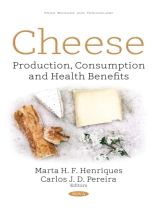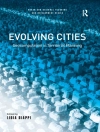Cheese Production, Consumption and Health Benefits provides current research in several topics related to the production, physicochemical, microbiological and sensorial properties of cheese, as well as food safety aspects related to this product. The book starts presenting research related to alternative coagulants from various origins in cheese manufacture, motivated by the increase in cheese demand and consumption. The importance of non-starter lactic acid bacteria (NSLAB) in cheese production is highlighted, especially concerning their potential and applications. Studies using specific adjunct cultures were reviewed, and new contributions are presented in order to evaluate their effect on cheese physicochemical and sensory characteristics. Cheese nutritional aspects, which follow the new consumer’s trends, are explored. The use of fibers in cheese is discussed and the impact of the production of "light" cheeses using fat replacers on texture and sensorial properties of cheeses is presented. Ripening is one of the most important stages during cheese manufacture. The ripening conditions (temperature, humidity, time, etc.) are responsible for the development of many flavours and the formation of free fatty acids (FFA) in cheese. In this book, two studies related to the lipolysis level, FFA composition and the volatile acids content of some traditional cheeses from the European Union Balkan countries (and from hard yak cheese) are presented. Instrumental and sensorial methods are used to evaluate the rheological and textural characteristics of curds, and to identify the optimal texturizing conditions of cheese ripening. Some correlations between textural characteristics of cheese during the acidification process and the physicochemical composition are established. Traditional cheeses from Algeria (Djben, Klila, Michouna, Bouhezza, Takammart and Madghissa), Brazil (Minas Padrao cheese) and from Southeastern Europe (Cascaval cheese) are discussed with respect to their production techniques and their physicochemical, texture and sensorial characteristics. Finally, safety issues are addressed. A review regarding the emergence of a potential foodborne pathogen (Mycobacterium avium paratuberculosis) in cheese is presented. The authors believe that this book will be very useful to food scientists, research institutions, the food industry and to practitioners of the dairy sector.
Marta Helena Fernandes Henriques & Carlos Jose Dias Pereira
Cheese Production, Consumption and Health Benefits [PDF ebook]
Cheese Production, Consumption and Health Benefits [PDF ebook]
ซื้อ eBook เล่มนี้และรับฟรีอีก 1 เล่ม!
รูป PDF ● หน้า 299 ● ISBN 9781536128420 ● บรรณาธิการ Marta Helena Fernandes Henriques & Carlos Jose Dias Pereira ● สำนักพิมพ์ Nova Science Publishers, Inc. ● การตีพิมพ์ 2018 ● ที่สามารถดาวน์โหลดได้ 3 ครั้ง ● เงินตรา EUR ● ID 6877641 ● ป้องกันการคัดลอก Adobe DRM
ต้องใช้เครื่องอ่านหนังสืออิเล็กทรอนิกส์ที่มีความสามารถ DRM












